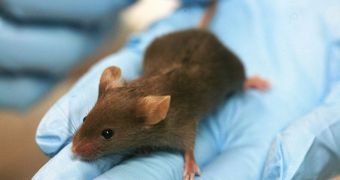Using a relatively new investigations methodology called optogenetics, investigators in Germany were recently able to shed more light on how certain types of neurons function. They were able to control the activity of specific nerve cells in the brain using nothing more than light.
Optogenetics is a relatively new field of research, in which scientists replace conventional approaches to studying living system with a method that involves the use of genetic manipulation and light.
The most common way this is done is by injecting certain chemicals inside living cells, that respond to light. The photosensitive substances can then turn a neuron on or off for example, essentially controlling whatever cerebral pathway researchers target.
The method is very precise, allowing control to be exercised with nanosecond lasers, and also allowing from cells of only a single type to be targeted. This is what experts at the Ruhr-Universitaet-Bochum (RUB) managed to accomplish recently, when they learned how to control the movements of mice.
Experts targeted specific nerve cells in the cerebellum, engineering them in such a way that they could be either activated or deactivated simply by shining light on them. What this does is give scientist the ability to discover the signaling pathways that control movement.
“We are now going to use this method to find out exactly what goes wrong in the nerve cells in movement disorders such as ataxias,” among others, explains RUB Department for Biology and Biotechnology professor Dr. Stefan Herlitze.
He is also the author of a new scientific paper describing the accomplishments. The work is published in the latest issue of the esteemed Journal of Biological Chemistry, AlphaGalileo reports.
“We know that the activity pattern of the Purkinje cells in the cerebellum is crucial for the coordination of movements. It is unclear, however, what contribution is made by the individual receptors,” the expert says. Using optogenetics, clearing up such mysteries is easier than ever.
The team found that the activity pattern of Purkinje cells was influenced to a great extent by the activation of structures called G-protein-coupled receptors, which are located on neurons. Visible motor defects appeared in the mice if Purkinje cell activity patterns were reduced by as little as 20-30 percent.
“We were able to demonstrate for the first time that the modulation of a specific G-protein-coupled receptor in the Purkinje cells is of crucial importance for the control and coordination of movement,” Herlitze concludes.

 14 DAY TRIAL //
14 DAY TRIAL //